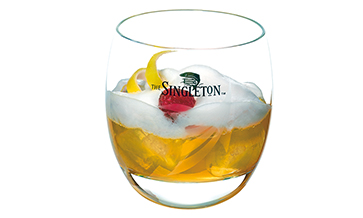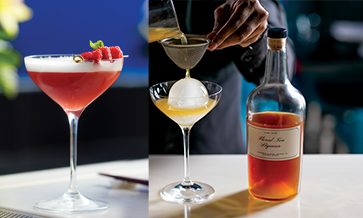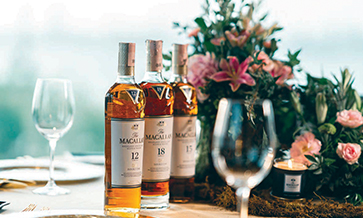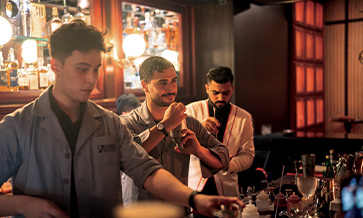Whisky tasting, bar trainings and connecting with whisky enthusiasts is what my typical day looks like. Having been a part of this industry for a fair amount of time, I have seen consumption patterns change as the palate for both men and women are expanding.
Over a period of time there has been a growth in taste for whisky and single malt Scotch which has led to a rise in demand for the category as a whole. Seeing your love for the spirit evolve I would like to share some anecdotes.
Evolution is simply the natural order of all things and this holds true even for the single malt industry. We as makers of this delicious spirit must predict years in advance our consumers habits and their transformation.
Thereby, allowing us to keep up with our audience’s tastes, enabling us to cater to their needs and palates. This research and anticipation constantly keeps us on our toes. After all, a single malt Scotch can’t be made any faster than 8 years of maturation.
Before I show you the future of Scotch and malts in the coming decade, let us address a few basic questions first: What does it mean to be a ‘Single Malt from Scotland’? How does one smell and taste this liquid?
The way I define it, it is “a distillate made by a single distillery from malted barley, water, and yeast that is then barrel aged for 8 years or more. From start to finish, even bottling must all be done in the country of Scotland.”
Unique flavours
Without making it sound more like a university lecture in chemistry I shall dive in briefly into the world of distillation. If every person making a single malt only has the same three things, then how in the world are they all so massively different?
First the barley is malted – the idea is to basically trick it into germination. There are multiple ways to do this faster or slower, starting, stopping and starting again. Each of these methods will be the start to a specific flavour the distiller is aiming to give his consumer.
The barley is now wet from the malting and is ready to be dried. The process of drying can also be initiated in different ways. More and more distilleries are using electricity to heat the floor of the malt house, which gives the liquid a non-smoky or peaty flavour, meaning that should they want to add smoke or peat it would have to be done using other methods.
A more common way that most people tend to think of is wood fire, with some peat moss. This, along with control over some vents, allows the smoke to physically touch and thus permeate the shell, leaving behind phenols.
All these processes leave different aromas and flavours, some from the peat leaves behind more of a medicinal trait; as like a Lagavulin 16-year-old.
Now that it’s all dry it’s finally ready to hit the mill. After grinding through the mill, the mix is called the grist. This consists of some fine flour, some coarse grind, and some larger chunks.
Think of the distiller as an artist or a chef, each has his/her own specific ratio for a recipe, and it’s always the best! Changing the ratio of the grist changes the flavour.
The only other items that can change flavor are the choice of yeast used, what bacteria gets introduced (used to prevent any bad kinds from forming), how many times it goes through the distillation process, and of course the maturation in the barrel (the age).
Fun part!
For those of you that knew all that and skipped to this part, nice to have you back! Now onto tasting, the fun part! The way I teach people to taste a fine whisky is easy.
Pour a dram; get your nose over the glass; then inhale with your mouth, not your nose. It is important to inhale the scent before the liquid touches the tongue.
Do this a few times until you start to taste it on your buds without having taken a sip. You will smell so much more this way rather than smelling with your nose directly.
Over the last 15-20 years we have seen a great many makers experimenting with new, bold, and subtle flavors. At first, I couldn’t get enough of a sherry cask and now I can’t recall the last time I had one!
They are no doubt delicious, but we are now at the tail end of the sherry cask trend and most producers have lowered their production in recent times. One thing that has been gaining traction is smaller batches of malts and whiskies.
Things like-multi barrel types, though these have always been around, are slowly gaining more attention. Or special editions that earlier were available only for distillery visitors to enjoy.
Though I haven’t had a chance to yet try it, the next thing on my list is the Nick Offerman edition 11-year-old Lagavulin, inspired by a TV show actor and his love for the malt. Recently, inspired by The Game of Thrones, Diageo Classic Malts came out with a limited-edition collection where each malt in the portfolio stood for one house of the show.
Gold standard
What I see in the future, is whisky being sort of a new gold standard. Investing in the right whiskies is and would be a very profitable version of the stock market. In recent times a whisky older than 16 years is becoming much harder to get. Moreover, many makers are turning to ‘No Age Statement’.
People have begun hoarding discontinued brands or brands that have a good chance to be, and they will in essence have a bank vault of history and flavours each in their own bottle.
We will also start seeing more custom expressions or limited editions. Personally, I am all for it. Some brands already have what year the edition was released, rather than an age statement. This goes against everything we know and love.
If I order a Singleton 15-year-old, I know what I’m getting before it even hits my table. It’s delicious, regardless of what year it was made or bottled. I am not proposing that everyone will do this; just that on the side there will be some brands that may a shift to a vintage, sort of the way wine does.
Each year you get a different something as far as flavour and maybe even a different look of the label, or even the bottle itself. They become collectors’ items, and things to show off on your home bar to your guests.
Over the next few years I see a rise in cocktail menus that will include single malts. In the past there were a lot of rum and vodka cocktails, which was then taken over by gin as part of the big cocktail trend.
I really think that cocktail menus across India will contain a healthy number of single malt cocktails. For those of you purists, it’s okay, trust me! You can in fact mix your Scotch, try it once, and I think you’ll enjoy. I’ll even leave you with one I created last year for the launch of The Singleton of Glendullan in India. Cheers!

Singleton Sour
60ml: The Singleton of Glendullan 15-yo
15ml: yellow Italian lemon juice
1 dash Bitter Truth chocolate bitters
1 tablespoon of pure maple syrup
1 egg white
Fill the small side of a cocktail shaker with ice and add everything listed above. Make sure to get the large side on nice and tight; then shake back and forth to mix up everything the best you can. Use a strainer to transfer the drink, not the ice, into a tall glass.
Top it up with some nice and cold soda water. The colder the better, just don’t freeze it – it’s too hard to pour that way. You should see it separate, top and bottom, that’s what it’s supposed to do.














